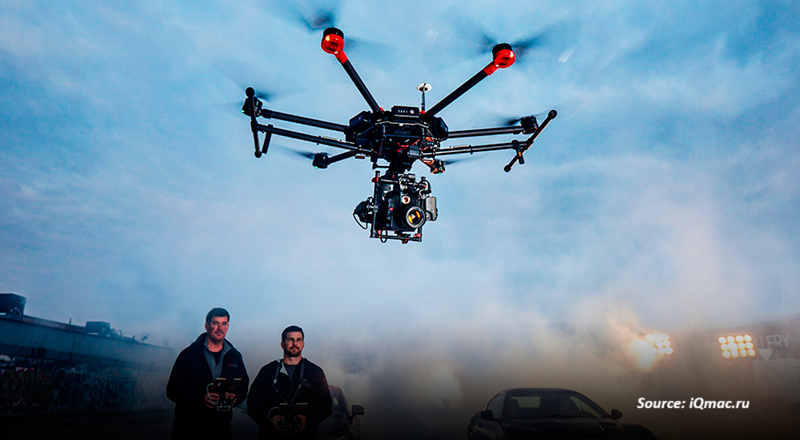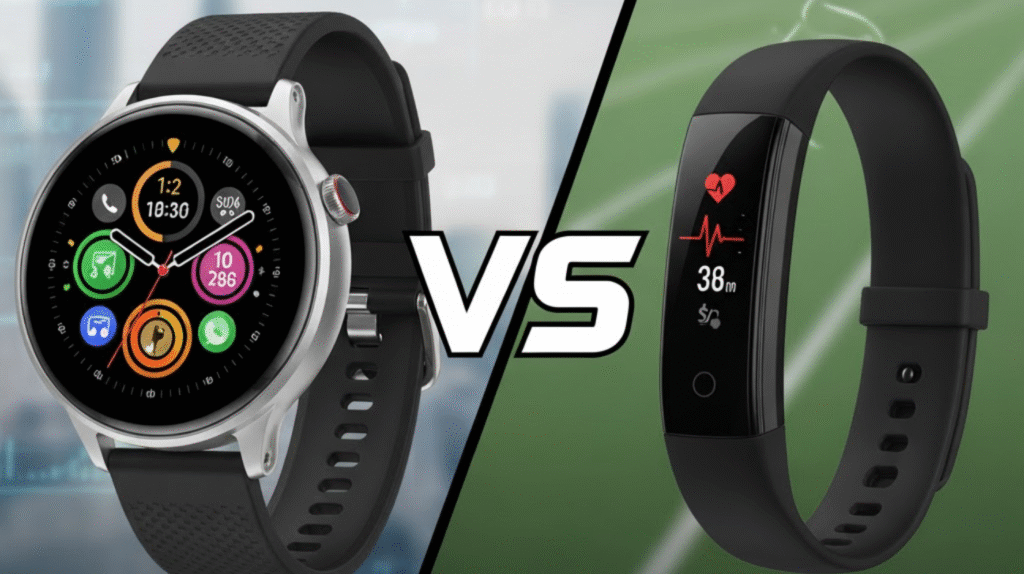The rapid evolution of drone technology is reshaping industries by introducing smarter, more efficient and highly capable aerial solutions. From AI-driven autonomous navigation, starting with swarm intelligence and then on to 5G-enabled communication, each new innovation is opening new frontiers for everything from logistics and agriculture to defense and disaster management. The higher efficiency of the battery, advanced imaging, and modular designs have greatly extended drone capabilities, turning them into an even more adaptive and resourceful solution. Furthermore, the emergence of DaaS models is increasing accessibility by enabling businesses to use drone technology without much investment. As these advanced developments continue to unfold, drones are set to become an indispensable tool, driving a future where aerial solutions enhance connectivity, efficiency, and automation across industries.
This blog explores the transformative innovations shaping the future of drone technology. The main developments that are giving rise to more efficient and autonomous operation of drones across industries include AI-powered autonomous navigation, swarm intelligence, and 5G connectivity. Further with longer battery life, newer imaging, sensing technologies and modular designs for drones expand the possibilities for their applications especially in logistics, healthcare and environmental monitoring. Additionally, the rise of Drone-as-a-Service (DaaS) models is making drone solutions more accessible to businesses by driving widespread adoption. Such innovations are positioning drones as essential tools in a connected, automated and efficient future.
AI Takes Flight: The Power of Autonomous Drone Navigation
Artificial and machine learning redefined the autonomously run ways of drones. Drones equipped with advanced algorithms in AI algorithms can process the real-time data coming from the sensor, cameras, and the GPS systems while determining where the obstacles really are and optimizing their routes while readjusting the orbits. These technologies are fundamentally crucial in most applications, particularly search and rescue, package delivery, and military operations, whereby the situational decision-making calls are very self-evident. A report from IoT World Today published in 2023 indicates that Massachusetts Institute of Technology’s Computer Science and Artificial Intelligence Laboratory, CSAIL, designed a brain-inspired system that autonomously drives drones. This liquid neural network effectively enables the drone to adapt to different environments and make real-time decisions very fast. Such development is a giant leap forward in the capabilities of autonomous drones, that opens the doors to more efficient and effective operations in various industries.
Swarm Intelligence: How Drones Are Learning to Work Together
Swarm intelligence technologies are revolutionizing drone operations by allowing large groups of drones to communicate, collaborate, and complete complex tasks in perfect synchronization, much similar to natural swarms of birds or ant colonies. This helps achieve great efficiency in big operations, such as agriculture, where coordinated swarms of drones monitor crops, apply fertilizers, and control pests with the least amount of human interference. For example, in January 2025, Sweden’s Defense Materiel Administration (FMV) successfully tested a drone swarm system that can coordinate itself and engage targets. Developed in collaboration with several companies that supply defense, this technology will have a mission to improve operations in the battlefield by enhancing situational awareness and lessened human intervention through networked drone capabilities. Thereby, the sense of swarm intelligence is quite promising and has the potential to transform civilian and military applications to be optimized into more efficient and autonomous operations.
Breaking Limits: The Future of Drone Battery Life & Energy Efficiency
Some of the major problems faced by drones include their relatively low battery life, that is responsible for curtailing their flight time and operating range. Advanced technologies in solid-state batteries and hydrogen fuel cells in next-generation drones will alleviate this limitation by improving endurance and opening up broader applications. Designs are also considered as energy efficient and include the case of solar-powered drones to decrease reliance on traditional power sources. According to a report by drone life, as of January 2025, next-generation battery technology for BEI is its use of advanced lithium-metal chemistry allows the new cells to demonstrate their ability to double drone flight time compared with those of more conventional lithium-ion batteries. Advancements in such fields are especially important in defense, logistics, and surveying, where improved flight capabilities translate to greater efficiency and lower operational costs. With continued innovation in battery technology, drones are going to become more reliable and versatile in applications.
5G-Connected Skies: The Next Revolution in Drone Communication
The integration of 5G networks is going to revolutionize drone communications with the possibility of higher data transmission rates, lower latency, and better real-time control. This development is highly beneficial for commercial applications including drone-based deliveries, remote inspections, and live-streaming aerial surveillance. Moreover, improved connectivity will enable seamless integration within IoT ecosystems, allowing drones to operate more efficiently in smart cities and industrial environments. ZTE Corporation reported in November 2024 that ZTE, China Unicom Henan, and Yunhuan Connected Drone Technology successfully deployed 5G-A low-altitude ISAC (Integrated Sensing and Communication) for blood delivery services. This deployment enhances emergency medical logistics by enabling real-time tracking and efficient drone-based blood transport. This initiative demonstrates the potential of 5G in revolutionizing drone technology, especially in critical sectors such as healthcare logistics, through the use of the high-speed connectivity and precise navigation.
Beyond Vision: Advanced Imaging & Sensing Technologies in Drones
Advanced imaging and sensing technologies in LiDAR and hyperspectral imaging as well as thermal sensors are expected to form the path forward for the development of drones. These developments will further open a host of new applications of drones across fields of disaster response, environment monitoring, and infrastructure inspection. With LiDAR technology, drones are able to produce highly accurate 3D maps, that can be of utmost value in urban planning and forestry management. Lidar annotations enable the application of 3D point cloud data, which maximizes the functionality of drones. For example, in forestry, lidar annotations can be used to annotate individual trees to allow proper monitoring of forest density and health. In urban planning, they help monitor development and changes in building geometry over time, maximizing strategic planning and land use studies. One of the latest developments is GeoCue’s partnership with Clogworks Technologies in February 2025. GeoCue collaborated with Clogworks Technologies to integrate its TrueView LiDAR payloads with Clogworks’ drones, thereby elevating the capability of drone-based mapping. The partnership will bring efficiency and precision to aerial surveying applications and demonstrate the expanding role of advanced sensing technologies in transforming drone operations.
Drones on Demand: The Rise of Drone as a Service (DaaS) Models
This DaaS model would further improve the growth within the market for drones because these solutions would give easy access of the drone to business enterprises, government agencies; using DaaS allows the deployment of drones at all aerial and security survey stations as well as at the inspections on the site for the given industry without involving capital investments, fleets, nor any technology. Due to these advancements, drone adoption will continue across various sectors. This is accompanied by growing value-added services. In October 2024, ideaForge came up with the franchise model. The firm intended to introduce a new kind of service for the entrepreneurs that involves drones. This will allow businesses to offer drone-based solutions without requiring large investments in technology. The initiative aims to standardize drone operations and enhance accessibility in key sectors such as infrastructure, agriculture, and security. As DaaS models progress, drones will soon form an indispensable element of the core of commercial and industrial activities globally.
Heavy Lifting: Enhanced Payloads & Modular Drone Designs
The future drones will come with higher payload capabilities and with the modular design, making it easy to carry on more weight than ever before. This will make it easier for the drones to incorporate various specialized equipment for particular applications thereby enhancing their versatility in logistics, healthcare, and construction. For example, in August 2024, GEV Wind Power launched its heavy-lift cargo drones meant for use in offshore wind farms. These drones feature a 2.6-meter wing length and a payload capacity of 100 kg they improve efficiency, cut costs, and enhance safety through the elimination of vessel-based transportation. As payload capacity and modular capabilities continue to evolve, with them will come more integral uses for drones in making businesses and operations easier.
Conclusion
The future of the drone market will be driven by advancements in technological developments that promote more autonomy, connectivity, energy efficiency, and sensing. Drones will be indispensable in all industries as AI-driven navigation, swarm intelligence, 5G connectivity, and further improvements in battery technologies unfold. Further expansion of Drone-as-a-Service models and modular drone design will drive market adoption further, enabling a path toward an efficient, connected, and smart ecosystem of drones. The bottom line is, these innovations can rewrite the prospects of aerial technology and give a significant thrust to the growing global drone market.
ABOUT THE AUTHOR
Arunav Dutta is a dedicated and enthusiastic researcher with two years of experience. He has closely monitored several industries, such as Tech, ICT & Media, Robotics, and Electric Vehicles. He offers valuable perspectives and analysis and enjoys sharing his insights through article writing and blogging. Outside of his professional pursuits, he enjoys reading and staying informed about industry developments. The author can be reached at info@nextmsc.com






